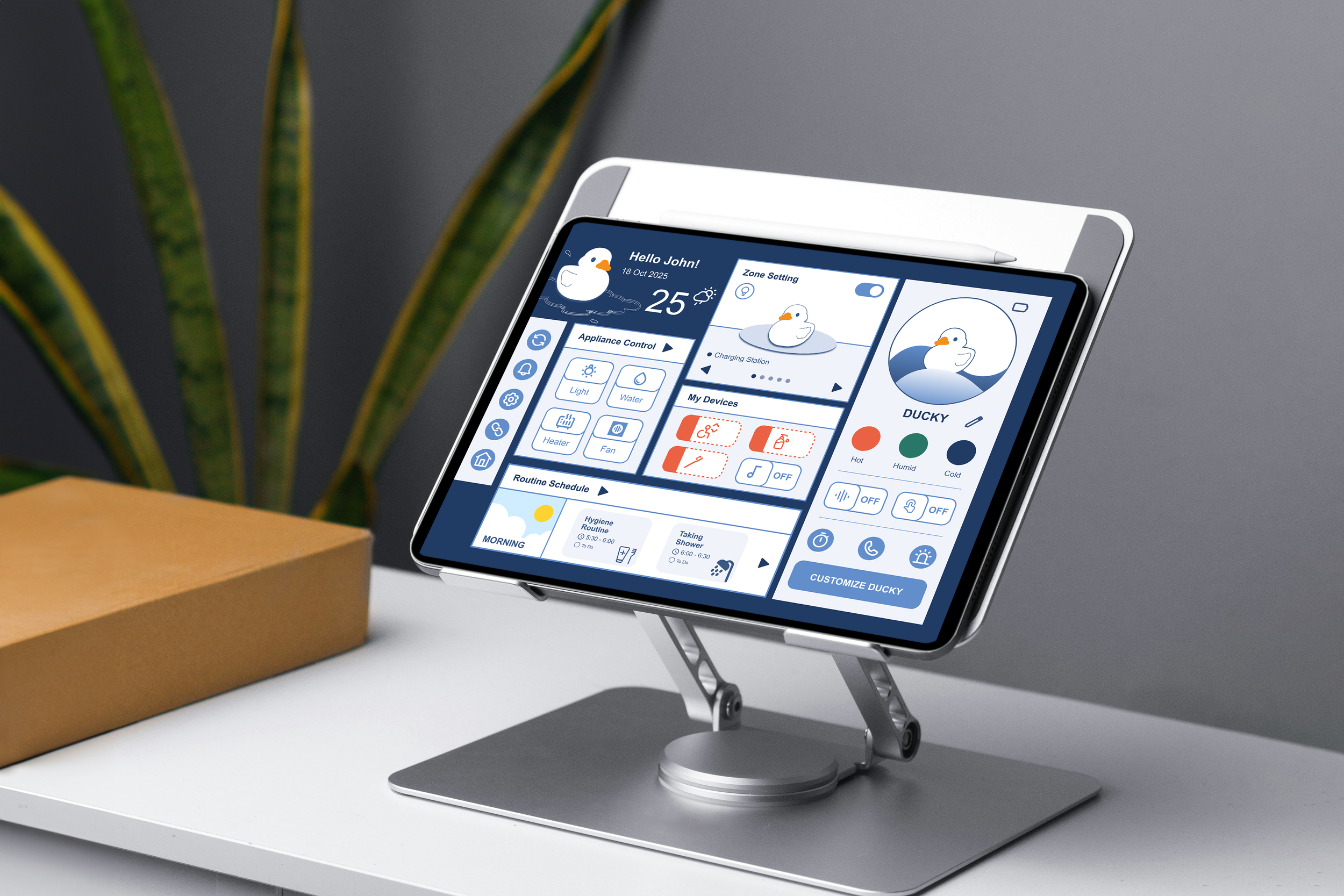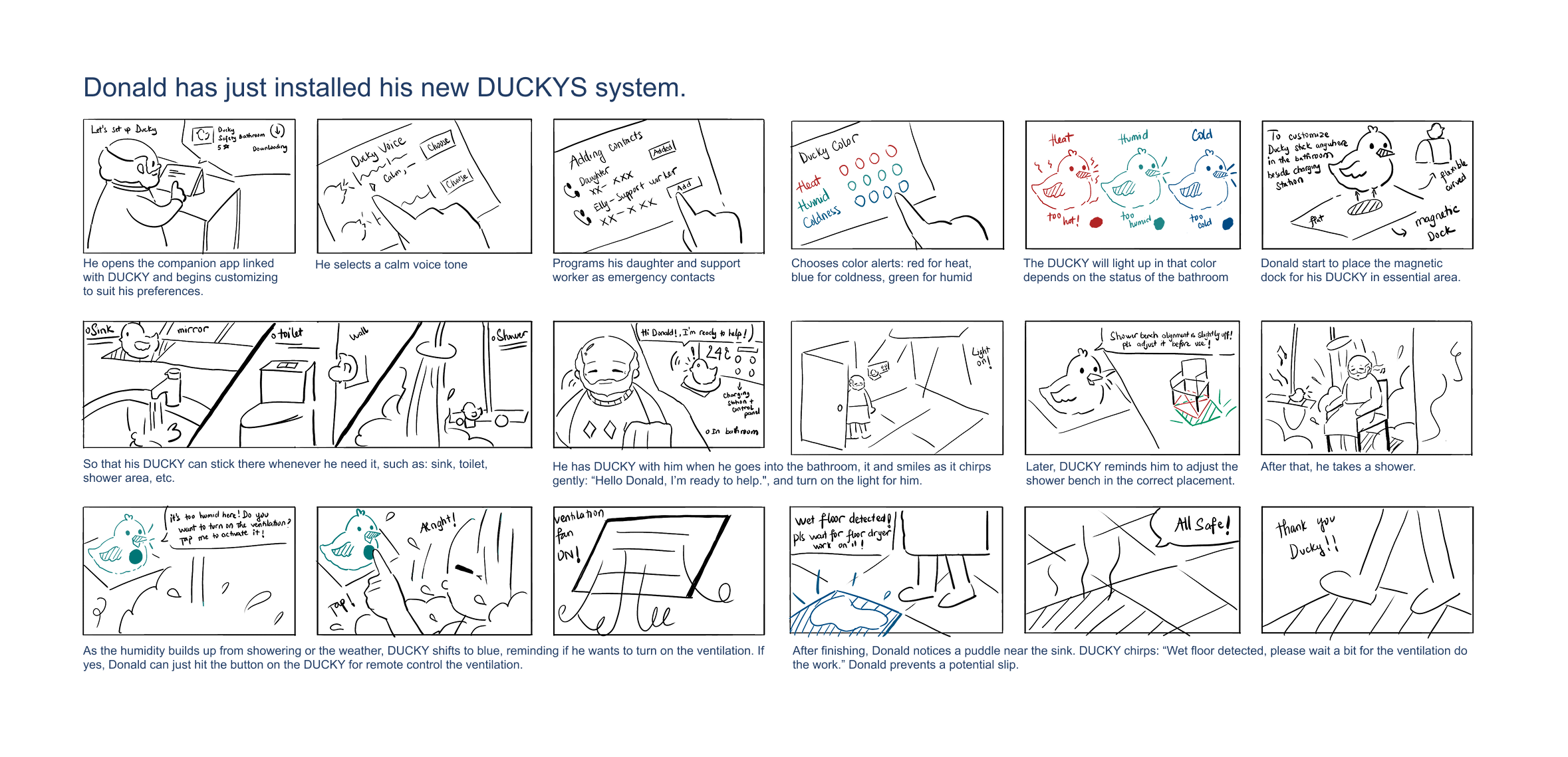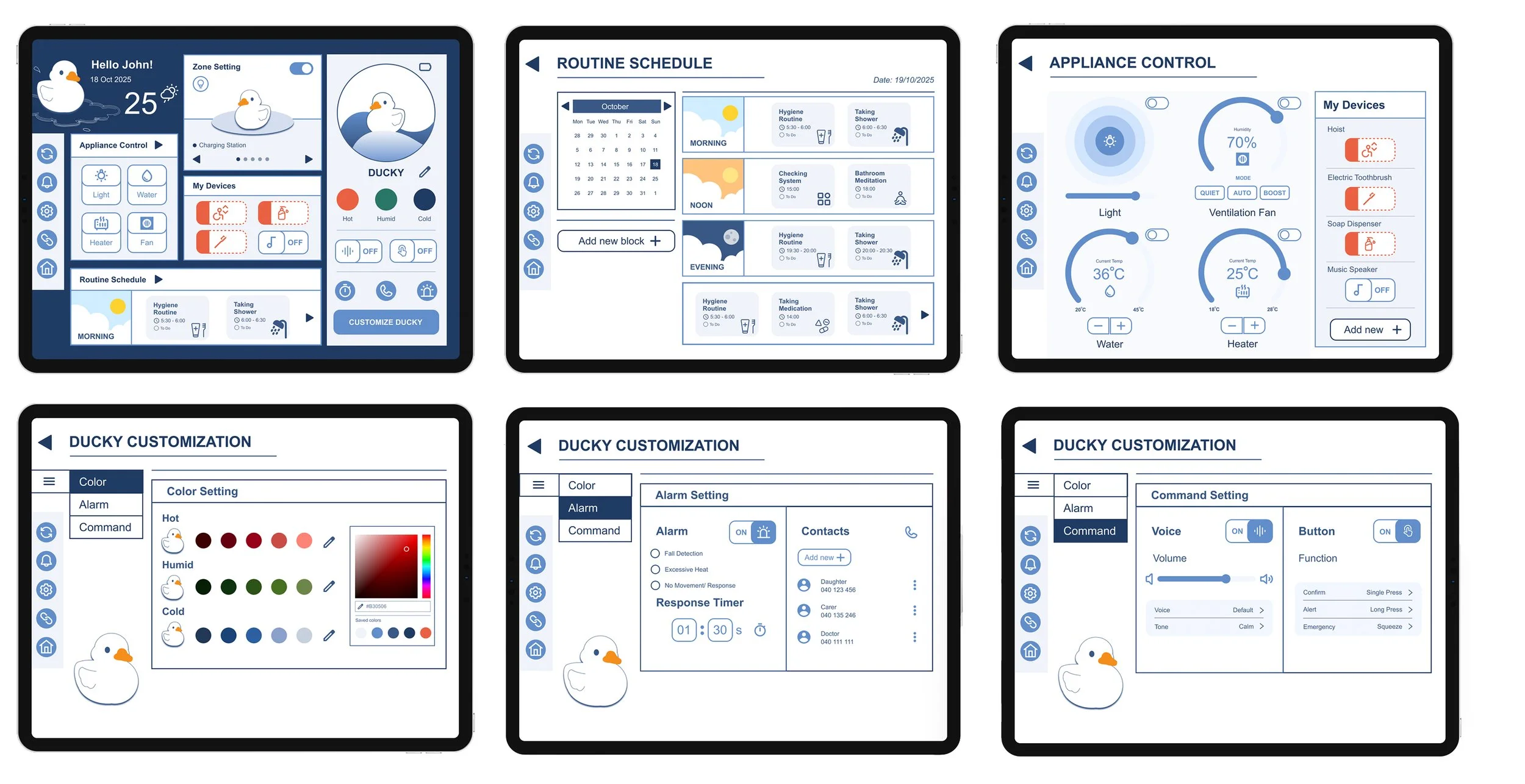
Figma - 2025 - Group Project
Project Overview:
Scope
DUCKYS is an integrated assistive technology (AT) system designed to enhance bathroom safety and autonomy for older adults. The project retrofits a user-friendly, intuitive, and emotionally satisfying UX solution into the home environment, tailored to individual needs and preferences. It combines a physical system (sensors and a ducky companion) with a tablet-based app for remote control and customization to support real-time monitoring, proactive alerts, and personalized interaction.
Understanding the Issue:
Process
Primary Research: Conducted a semi-structured interview with an older adult and performed an in-home bathroom observation to understand daily routines, safety concerns, and technology comfort levels.
Secondary Research: Reviewed literature on aging, technology adoption, and entertainment preferences. Studied case examples of existing assistive technologies for elderly people to identify gaps and opportunities.
Design Ideation: Used Crazy 8 sketching and affinity mapping to generate and cluster ideas around safety, usability, and emotional comfort with bathroom context.
System Development:
Created a descriptive prototype of the DUCKY physical system.
Designed a high-fidelity tablet UI prototype in Figma to simulate user interaction and accessibility features.
Evaluation & Testing: Conducted usability testing with five elderly participants to gather feedback on interaction flow, clarity, and emotional response. Synthesized insights into actionable refinements and future design directions.
Finalization: Refined the design system based on user feedback, ensuring the final prototype balances technical functionality with emotional resonance and ease of use.
Pain Points
Physical vulnerability: Slippery surfaces, limited reach, and reduced balance increase the risk of falls and injuries, particularly for users with mobility limitations.
Sensory limitations: Visual and auditory impairments can make it difficult to detect hazards, hear alerts, or interact with digital interfaces.
Privacy and autonomy: Users want to feel safe without feeling monitored or exposed. Assistive systems must be discreet, respectful, and user-controlled.
Technology hesitation: Many older adults are cautious about unfamiliar tech, especially if it feels complex or intrusive.
Emotional reassurance: Beyond functionality, users need to feel emotionally supported, knowing the system is there to help, not to surveil.
Defining Design Goals:
Target Audience
Goals
Enhance Safety Without Compromising Privacy: Design discreet sensor-based monitoring that alerts users and caregivers to risks while preserving personal dignity and autonomy.
Ensure Accessibility Across Diverse Abilities: Create interfaces and interactions that accommodate visual, auditory, and mobility impairments, using clear visuals, voice cues, and simplified touch navigation.
Deliver Intuitive and Emotionally Reassuring UX: Build a system that feels familiar, comforting, and easy to use, reducing anxiety and promoting confidence in daily routines.
Support Customization and User Control: Allow users to tailor settings, alerts, and visibility preferences to match their comfort level and individual needs.
Refine Through Real-World Feedback: Continuously improve the system based on direct input from elderly users, ensuring the final design is grounded in lived experience and practical usability.
Smart Tiles
Ducky (Companion Robot)
Control Panel:
Tablet-based application for scheduling, customization, and oversight.
The physical control panel, combined with the charging station
STYLE GUIDE & SCREEN DESIGN
How might we enhance bathroom safety and accessibility for elderly people while maintaining their privacy?
Bathrooms pose significant risks for older adults, especially those with age-related disabilities such as reduced mobility, hearing loss, or visual impairments. Yet these spaces are also deeply personal, where independence, dignity, and privacy must be preserved.
Adults 65+ experience some age-related changes (vision, hearing, memory, mobility)
DUCKYS SYSTEM
DESIGN IDEATION
STORYBOARD
SMART TILES & DUCKY PROTOTYPE
DUCKYS TABLET CONTROL PANEL PROTOTYPE
Semi-structured Interview - Observation - User Testing
Tablet View Application Design

Dash Board

Routine Schedule

DUCKY Customization

Appliance Control








